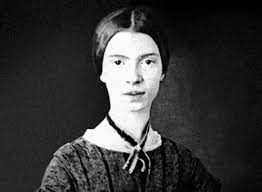What is Poetry to You? (Emily Dickinson)
Defining outstanding poetry is a devilishly difficult thing to do. But many people do understand it “when you see it”. In that way, it is quite like trying to define beauty. When you see it, you know it, in the many forms it can present. Clearly, such things are in the eye of the beholder.
If there is agreement with this, I thought it would be interesting to review how some heavy-weight poets have attempted a definition.
Here is the definition Emily Dickinson wrote to Thomas Wentworth Higginson in 1870 which is often quoted:
“If I read a book and it makes my whole body so cold no fire can ever warm me, I know that is poetry. If I feel physically as if the top of my head were taken off, I know that is poetry. These are the only ways I know it. Is there any other way?”
I place high value on this definition for two reasons: what it says and what it does not say.
As to what it says, it speaks to using language effectively enough to produce feeling intensity in the mind that simulates a sensory input from the body. This is tough. But she identified this is the core for writing which is likely to “stick” (persist in the memory) and be impactful to the reader.
It does not speak to any poetry format (couplet, sonnet, villanelle, etc.), poetry “mechanisms” (rhythm, rhyme, meter, alliteration, metaphor, simile and on-and-on), subject matter (love, nature, relationships, etc.) or any technique.
This makes tons of sense to me. While the poetry of Emily Dickinson is beloved around the world, there are innumerable other definitions that have been offered from poets of distinction.
In future blogs we will look at some of them. But it will always be a good idea to keep in mind the definition provided by, arguably, the premier American poet of the 19th century.
After more than 150 years, it still works for me.

